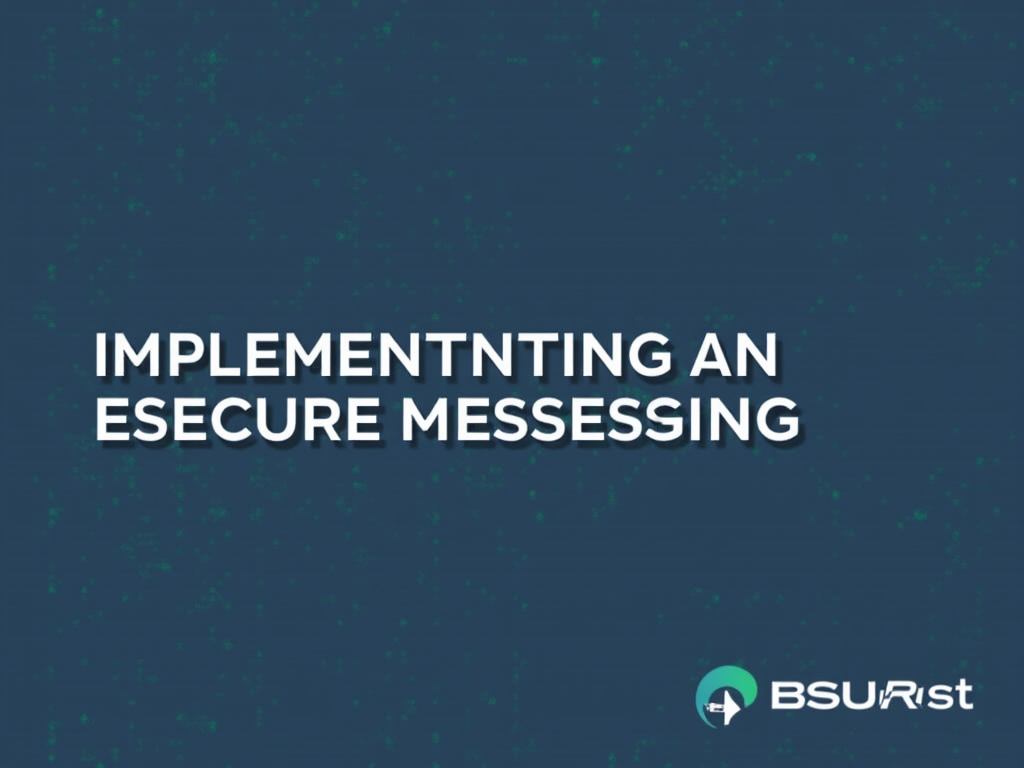Implementing an Effective Secure Messaging Policy
As technology continues to advance, the way we communicate has changed dramatically. With the rise of mobile devices and the internet, messaging has become an essential part of our daily lives. However, with this increased reliance on digital communication comes a growing concern about security and privacy.
In today’s world, it is more crucial than ever to implement an effective secure messaging policy that protects sensitive information and ensures the confidentiality and integrity of messages. In this article, we will discuss the importance of implementing a secure messaging policy, identify potential risks and threats, and provide guidelines on how to create and maintain such a policy.
Why Implement a Secure Messaging Policy?
Implementing a secure messaging policy is essential for organizations to protect sensitive information and ensure compliance with regulations. Here are some reasons why:
- Prevent Data Breaches: A secure messaging policy helps prevent data breaches by ensuring that messages are encrypted, authenticated, and monitored.
- Comply with Regulations: Many industries, such as healthcare and finance, have strict regulations around communication. A secure messaging policy ensures compliance with these regulations.
- Maintain Trust: By protecting sensitive information, you maintain trust with customers, employees, and stakeholders.
Identifying Potential Risks and Threats
Before implementing a secure messaging policy, it is essential to identify potential risks and threats. Here are some common ones:
- Unsecured Messaging Apps: Using unsecured messaging apps can compromise sensitive information.
- Insufficient Authentication: Failing to authenticate messages can lead to impersonation attacks.
- Weak Encryption: Weak encryption can be easily decrypted, compromising the confidentiality of messages.
- Lack of Monitoring: Not monitoring message traffic can lead to undetected security breaches.
Creating an Effective Secure Messaging Policy
To create an effective secure messaging policy, follow these guidelines:
- Define Scope: Identify which communications channels and devices will be covered by the policy (e.g., email, text messages, instant messaging apps).
- Establish Encryption Standards: Set encryption standards for all messaging platforms used within the organization.
- Implement Authentication: Implement authentication mechanisms to ensure that senders are who they claim to be.
- Monitor Message Traffic: Establish monitoring procedures to detect and respond to potential security threats.
- Train Employees: Provide training on secure messaging best practices, including proper password management and secure message handling.
Maintaining the Secure Messaging Policy
To ensure the effectiveness of the secure messaging policy, it is essential to maintain it over time. Here are some steps to follow:
- Regularly Review and Update: Regularly review and update the policy to reflect changes in technology, threats, and regulations.
- Conduct Audits: Conduct regular audits to ensure compliance with the policy and identify areas for improvement.
- Train Employees: Provide ongoing training on secure messaging best practices to ensure employees are aware of the importance of maintaining confidentiality and integrity.
Best Practices
Here are some additional best practices to consider when implementing a secure messaging policy:
- Use End-to-End Encryption: Ensure that messages are encrypted from sender to recipient, preventing interception by unauthorized parties.
- Use Two-Factor Authentication: Require employees to use two-factor authentication (e.g., password and fingerprint) for added security.
- Set Message Retention Policies: Establish policies for message retention, including deletion schedules and backup procedures.
Conclusion
Implementing an effective secure messaging policy is essential for organizations seeking to protect sensitive information and ensure compliance with regulations. By identifying potential risks and threats, establishing encryption standards, implementing authentication mechanisms, monitoring message traffic, training employees, and maintaining the policy over time, you can create a robust secure messaging policy that safeguards your organization’s communications.
Remember, secure messaging is an ongoing process that requires continuous attention and improvement. Stay ahead of the game by staying informed about the latest security threats and best practices in secure messaging.



